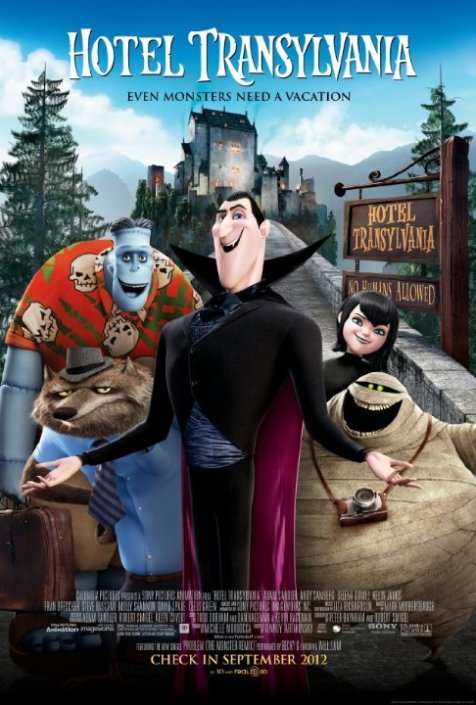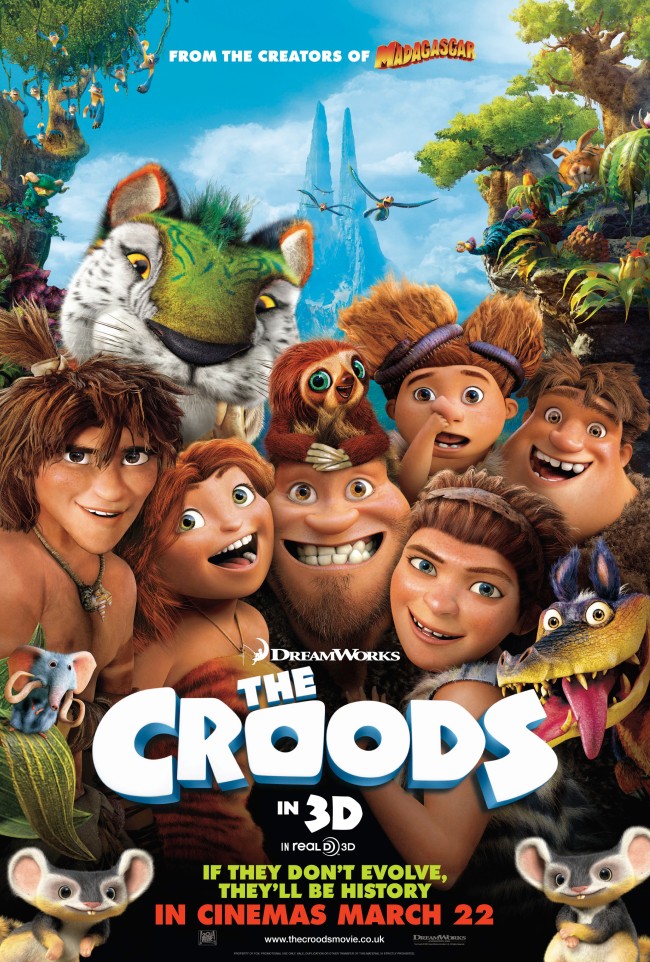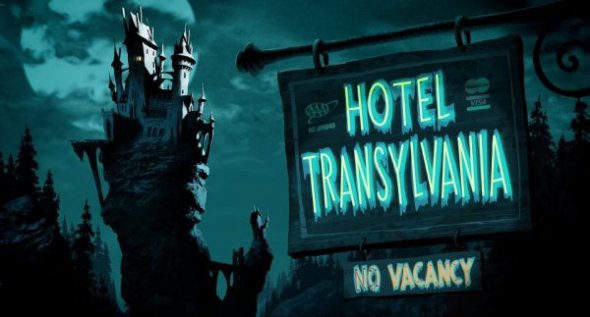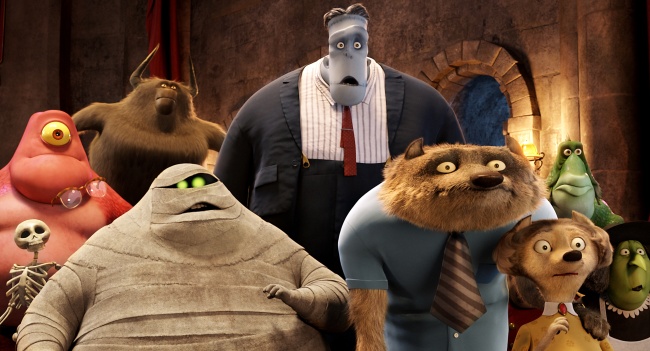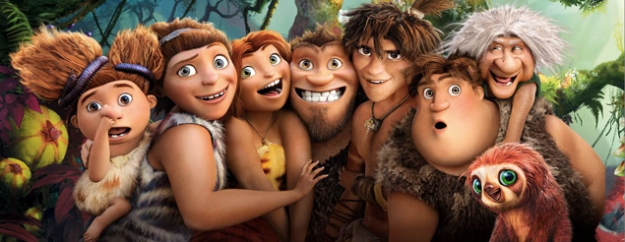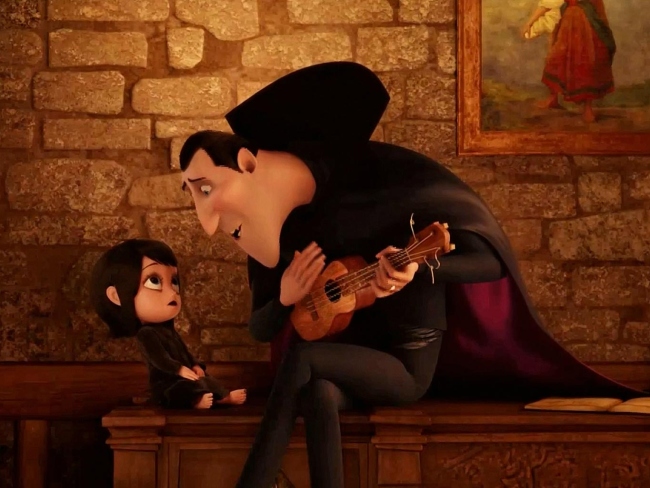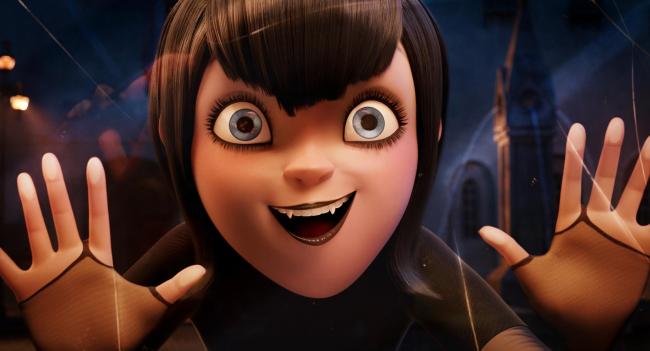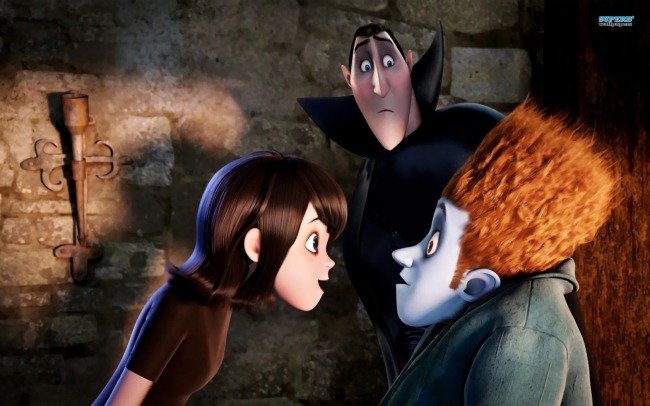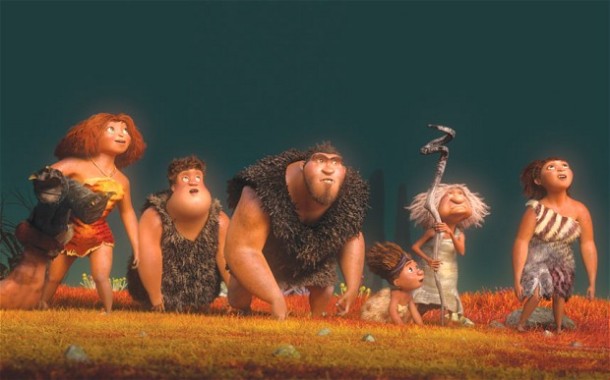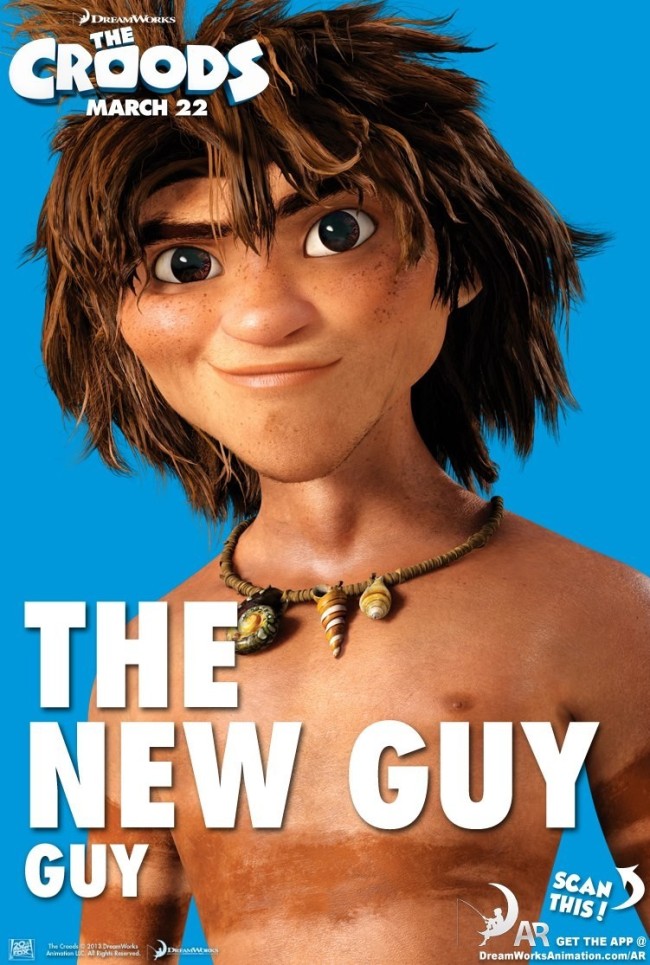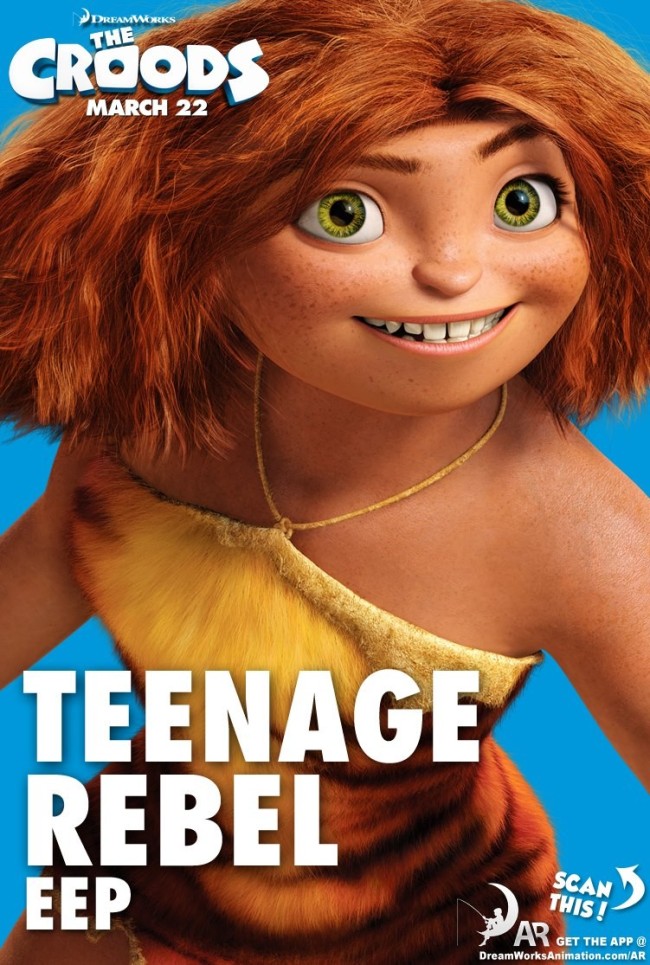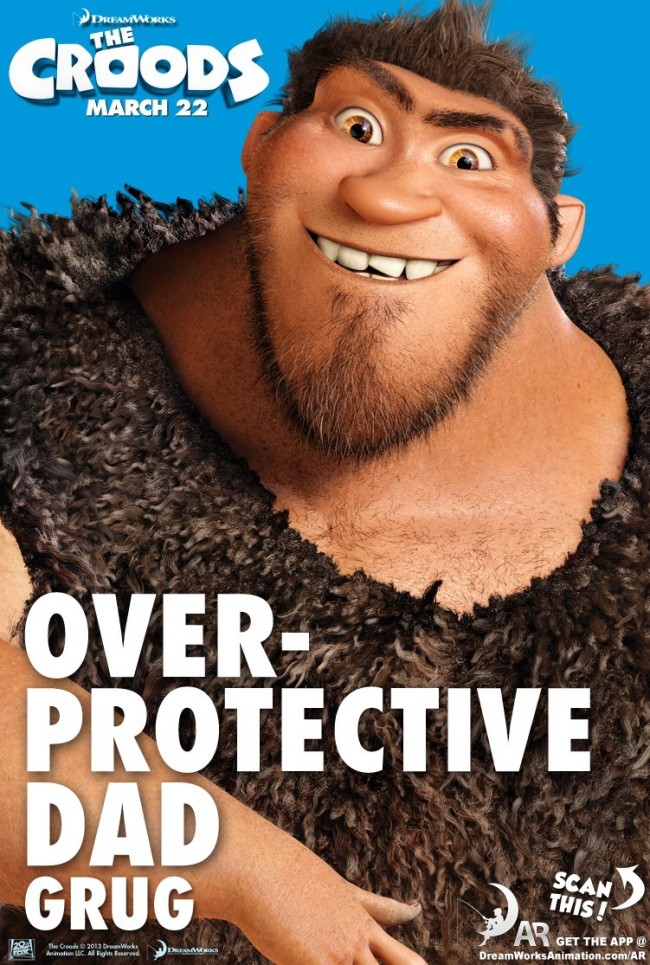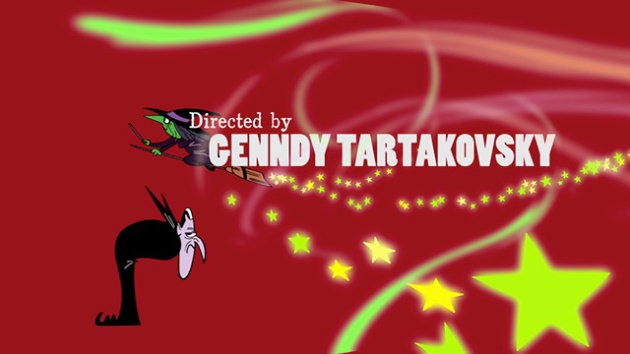Chapter 7: DADDY DAY CARE
In which I talk about HOTEL TRANSYLVANIA and THE CROODS.
CATCH UP:
Where have I been? Where have YOU been?!
But seriously! I apologize for being away for so long. After a few weeks of back to back posts, it’s been a surprising challenge to get back in the game.
If you must know, I have been watching cartoons. Lots of them. See, the thing is, when you’ve got a site like this, you end up having to go through a ton of eps when you want to talk about old cartoons. Or, if you want to hit the new stuff, you have to wait till it’s all over. Well, you don’t HAVE to wait, but you should. A case in point would be the current season of Avatar The Legend of Korra. It is back and forth on the good and bad, so I am holding off before I weigh in on the second season.
So, I am hoping to turn this into a back to back post within the week, mostly since I have a big head start of supplementary posts and the hiatus week of theescapeaid.com. So, here we are.
Now, let’s talk about last year’s HOTEL TRANSYLVANIA (Sony Pictures) and this year’s THE CROODS (Dreamworks).
I should preempt the rest of this entry to say that I will be speaking about the films as pair. From this point I will also be sharing SPOILERS, so consider yourselves warned.
TWOFER:
That being said, I felt the need to talk about these two movies [together] because I believe they represent a poor trend in narratives tracks in animated features. I would go so far as to say that these movies are BARELY for children in the way you would expect children’s books to be for certain ages. Now please bear with me here. I do have a degree in Children’s Literature, so I have a tendency to think in these tracks.
Good Children’s books have that special magic of being for children AND adults. The protagonists are characters that are usually young and identifiable to children, while their struggles are reasonably relatable to the adults.
I judge good animated features to have the same set of legs. Sadly, the two features in question fall short of the mark.
Hotel Transylvania has a large cast of iconic movie monsters, all of whom are adults. They talk about how hard it is to be creatures of the night and how rough it is to raise children and they also occasionally pull some pranks on each other, though they mostly feel like the equivalent of fart jokes.
Croods has a smaller, more manageable cast of relatable characters. The show follows a family of cavemen, a father, mother, grandmother, the eldest daughter, a son, and a “baby” girl.
Each films feature overbearing, overprotective, (preternaturally) powerful fathers, their adventurous, equally powerful daughters, goofy but well-intentioned love interests (for the daughters).
The fathers, Dracula in Hotel Transylvania and Grug in The Croods are voiced by Adam Sandler and Nicholas Cage respectively. Their paychecks and star power might have dictated the focus of the films and ultimately harmed them as a whole. To be fair, their daughters Mavis (voiced by Selena Gomez) in Hotel Transylvania and Eep (voiced by Emma Stone) in The Croods, were probably decent selling points to kids. And that is my key sticking point: the protagonists of these films are not the children/daughters.
Hotel Transylvania is focalized through Dracula, who runs a secret hotel where “creatures of the night” don’t have to hide their monstrosity from the humans they believe want to chase them away with torches and pitchforks. Dracula is especially invested in keeping his daughter, Mavis, away from the humans who killed his beloved wife. This all comes to head when a human, Jonathan (voiced by Andy Samberg) wanders into the secret hotel’s boundaries. Jonathan not only threatens to expose his humanity to its vacationing monsters, he falls for Mavis and begins to threaten Dracula’s entire bubble of protective secrecy. Dracula eventually concedes to Jonathan’s affections for Mavis, goes on a mission to bring him back (after he is cast out) and while out in the real world, learns that monsters are cool now.
This film never stops focalizing on Dracula. He is given the conflict and is the one who overcomes it. He undergoes all the change and everyone is simply there to cheer him on and wish him well. If there is a message to this movie, it is that: overprotective dads have their reasons and with the appropriate motivations might learn to overcome them.
But what about the “kids”?
Mavis has her father’s supernatural skill set: super-strength, flight, shape-shifting into a bat—and she is 118 years old. She is the one who falls in love with a human (as an immortal, it can be rough) and learns the truth about him, but she is never given the chance to fight for him or make her own decisions. In the end, it is her father who decides it is okay for them to be together. He is the one who goes out, risking life and limb—discovery by humans and a nasty sunburn, to bring him back. But what about Mavis? Why doesn’t she do anything? Why can’t she go out and fight for her love? Why does it take daddy to say ‘it’s okay’ before it’s okay?
In The Croods (set in some kind of prehistoric fantasy world), the initial focalization is very misleading. The story is narrated by Eep and most of the initial action is done by her. She is the one who dares to leave the cave, the one who wants to see the world (like Mavis), she is the one whose curiosity is constantly being stifled by her father (Grug). She bears the initial conflict until she meets Guy (voiced by Ryan Reynolds). After she meets Guy and The Croods are forced to move from the safety of their cave, the focalization suddenly shifts to Grug and Guy. Guy is brilliant and teaches all the Croods about tools, imagination, and curiosity. With the exception of Grug, the Croods take to the new world view rather quickly.
Eep is positively enchanted by Guy. He represents everything she wants to be—curious and clever. Guy’s interest in Eep is suddenly the ultimate threat to Grug. While earlier he simply represented the unnecessary taking of risks, now he threatens to take Grug’s daughter away from him. From then on, Eep’s voice becomes almost non-existent (along with her narration). Whereas earlier she was a strong female character with wants and desires, she quickly becomes a hapless, lovestruck teenager with no life goals other than following Guy. The film then shifts and follows Grug trying to win his daughter and his family back from Guy’s mystique. Failing that, he sacrificed himself to save them all. And just when all hope seems lost, he learns to embrace Guy’s message and save himself (and a bunch of cute animals). The story ends with the voice over of Eep narrating the success of her family as curiosity and imagination becomes their greatest tool of survival.
But it’s a good thing Grug didn’t have to die for her to learn that!
Both films don’t let either child, both young women, have dreams, experience conflict and ostensibly solve it themselves. It falls to their fathers to “correct the error of their ways” and provide the children a chance to live better lives.
And that is everything wrong with these animated features meant for children.
Good stories for children (especially those that I have taken the time to outline in this blog), are stories that provide child protagonists with the motivation, tools, and opportunity to solve their problems. If you consider some of your favorite cartoons, you should see how well the characters go about getting their happily ever afters.
To name just a few of mine:
- Aladdin wishes himself into trouble but fight and eventually tricks his way out of trouble.
- Mulan fights for her father’s life and then for the greater good of China.
- Lilo chooses friendship and family over normalcy while Stitch chooses nurture over nature.
There are more than a few themes of necessary rescue for female protagonists (Cinderella, Sleeping Beauty, Snow White), but a few of the more recent girls, like Rapunzel and Merida, are clever and sassy enough to go for what they want, make mistakes, and undo what they can.
Aren’t those stories so much more engaging? Aren’t they the fictions we want kids learning from?
That is the kind of media we should be presenting children. We don’t need to constantly shield them from adversity. We can teach them to do their best to be responsible, adventurous problem solvers.
So far, Hotel Transylvania and The Croods have taught kids not to worry cause their dads will always be there to make things right… which is rubbish.
It should be noted that Hotel Transylvania made north of 148m gross (in the US) while The Croods made more than 187m gross (also in the US). Both features are slated for sequels in 2014.
Credit Where Credit is Due:
Genndy Tartakovsky directed Hotel Transylvania. And I love me some Genndy Tartakovsky. I loved his work on Dexter’s Lab, Samurai Jack, and Symbionic Titan (which is on my list of future reviews). If you have not seen animated Star Wars: The Clone Wars, you are missing out. After Symbionic Titan was cancelled, Tratakovsky left Cartoon Network and moved to Sony. There was a lot of buzz about this since his brand was strong but also a bit more mature than his early work on Dexter’s Lab (and supporting work on Powerpuff Girls). I have much to stay about Symbionic Titan but I wanted to mention that Tartakovsky’s hand in Hotel Transylvania did not go unnoticed. His patented, face paced, in your face style was not a bad thing and while the film was visually snappy, it could not save the poor plot and narrative.
On the other hand, The Croods had Chris Sanders who was the idea/story man behind animated feature films such as Lilo and Stitch (including the whole TV series), How to Train your Dragon, Mulan, The Lion King, Aladdin, and Beauty and the Beast. With that many notches on his belt, you’d think he would have been able to put together a better story.
Then again, IMDB shows that each film had no less than five co-writers, which makes me think that both were just a messed up games of hot potato. In big budget productions like this, you often hear about corporate meddling or rewrites and assigning blame is both a ridiculous effort and unnecessary in the grand scheme of things. When held by its bare bones, both these projects had strong female protagonists, a conceptually promising cast and plot, but were probably just ground out in the machine of corporate/creative production. That said, they still had decent messages of doing the right thing against the odds, placed importance in family (broken, extended or otherwise) and (more so for The Croods) entertained.
Now, does anyone think I should see EPIC?

